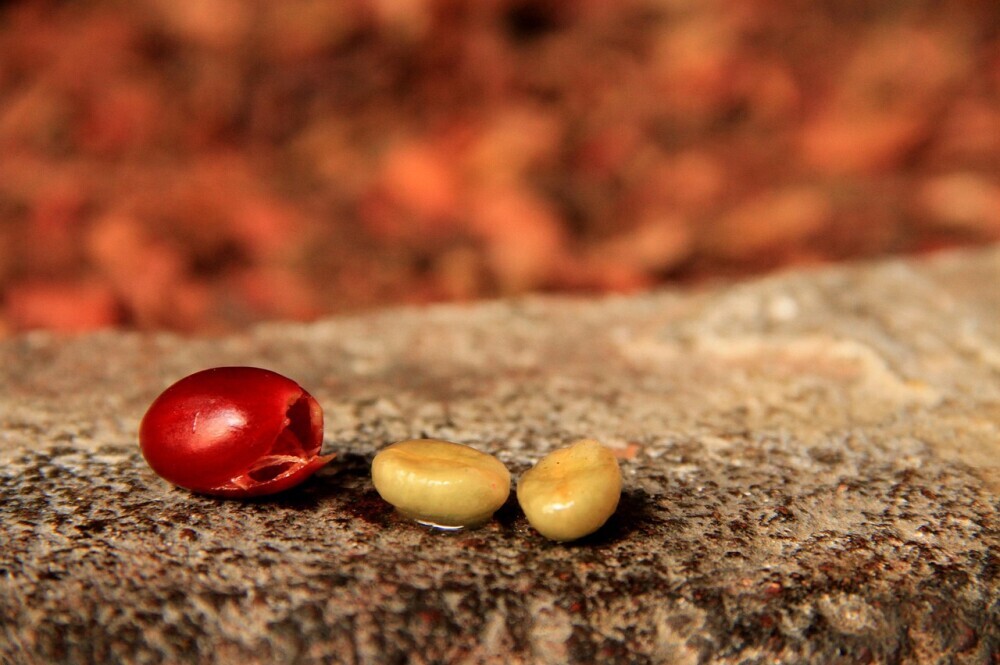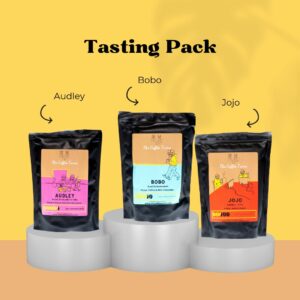Washed Vs Natural Coffee
Coffee processing methods shape more than just how the beans are separated from the cherry. They totally impact the cup in your hand. The washed and natural process are two of the most talked-about styles in coffee. Both have unique flavours, quirks, and challenges. If you’re picking out beans or just want to level up your coffee knowledge, digging into what separates washed from natural coffees is really helpful. I’m breaking it all down, from how each process works to how those choices show up in your mug.
How Coffee Processing Works
Freshly picked coffee cherries are just the start. The process each cherry goes through after harvest changes the bean’s flavour, body, and character. Processing is basically how producers remove the fruit around the coffee seed and prepare it for roasting. Washed and natural are at opposite ends of the spectrum, and most coffees use some version of one (sometimes with a twist, but more on that later).
Briefly:
- Washed process: Uses water to strip fruit from the seed and clean the beans thoroughly before drying.
- Natural process: Leaves the coffee cherry intact around the bean during drying, letting the fruit dry directly on the seed.
Simple as those descriptions might sound, the differences are felt all the way through growing, producing, brewing, and finally, tasting.
Washed Process Coffee: Clean and Consistent
The washed process (sometimes called “wet process”) is popular in places like Central America and East Africa. I always picture it as the clean, organized approach; it strips away everything but the bean inside the cherry.
How it works:
- Cherries get pulped, which means the outer skin and most of the fruit are removed right after harvest.
- The beans are soaked in water to break down and remove the sticky pulp left on the seed by fermenting for 12 to 48 hours. This step is key for the classic “washed” clarity.
- After fermentation, beans are washed and put out to dry (on patios, raised beds, or mechanical dryers), usually until they reach 10% to 12% moisture.

Flavour Profile and Brewing
Washed coffees often bring a bright, crisp acidity—think citrus, florals, green apple, or tea. The flavour is more about the bean’s origin and varietal, and less about the impact of the fruit. Clarity, balance, and transparency come through, so you’ll probably notice more clearly separated flavors. If I’m recommending a first coffee to someone curious about where beans come from, I almost always reach for a washed option because you can really taste those regional notes.
Maintaining consistency and clean flavors in washed coffees calls for serious attention to detail. Producers must regularly check water quality, fermentation time, and drying conditions to avoid defects. Many industry professionals appreciate washed coffees for how well they highlight subtle differences between regions and varieties. It makes comparing beans from, say, Kenya and Guatemala especially eye-opening.
Natural Process Coffee: Sweet and Funky
Natural process (also called “dry process”) coffee keeps the whole cherry intact around the bean during drying. This method goes way back in coffee history, especially in places where water is scarce, such as Ethiopia and Brazil.
Here’s what makes naturals different:
- Ripe cherries are picked and spread out to dry with fruit still on, often on raised beds or patios.
- Dried cherries get turned regularly to avoid mold and uneven fermentation. It takes anywhere from 10 days to a few weeks.
- Once dried to the right level, machines remove the now-hard fruit and parchment to reveal the beans inside.
Flavour Profile and Brewing
Natural processed coffees are often bigger, bolder, and fruitier. You’ll taste berry, tropical fruit, winey or jammy
notes, and a chocolatey sweetness that sometimes feels intense. The body tends to be heavier, and the flavors are wild in the best way. There can also be herbal, boozy, or funky qualities depending on the producer’s skill and the drying conditions. Naturals make great options for people who want something less predictable or enjoy experimenting with flavor. At times, naturals offer a surprise, which can be a pleasant departure from more predictable washed coffees.
The natural process calls for constant care during drying. Producers need to turn the cherries often and keep temperatures in check. Too much humidity or not enough airflow can spoil the batch. When done right, the result is an eye-catching profile—one that’s perfect for folks who love chasing new coffee adventures.
Comparing Washed and Natural Coffee: What I Notice Most
After trying hundreds of coffees from both sides, I’ve noticed some big differences that can help you decide what suits your taste or what’s fun to explore if you like variety:
- Clarity vs Complexity: Washed coffees give me a clear, focused taste, while naturals often have overlapping, complex flavors.
- Acidity and Sweetness: Washed has more crisp, lively acidity. Natural coffees lean into ripeness, with deeper sweetness and reduced sharpness.
- Consistency: It’s easier for roasters and drinkers to get consistent results from washed beans. Naturals can be a bit of a wild card from bag to bag.
- Body: Naturals bring heavier body, almost syrupy at times. Washed tends to be lighter and juicier.
- Aftertaste and Aroma: Washed coffees tend to finish clean and brisk, while naturals might leave a sweet, lingering aftertaste or a fuller, fruity aroma that lasts even as the cup cools.
Neither style is “better” across the board. It all comes down to personal taste and what kind of experience you’re into when you brew.
Things To Consider When Buying Washed or Natural Coffees
Shopping for coffee beans can be confusing with all the choices out there. Here’s what I keep in mind when looking at labels or chatting with a local roaster:
- Freshness: Ask about roast date. Fresh roasts help the true process flavours shine.
- Roaster’s Description: Good bag labels or websites will describe expected flavours.
- Origin: Some regions are known for either washed or natural. For example, Ethiopian coffees are delicious in both. But, if you’re after a clean, sparkling cup, you might prefer a washed Ethiopian Yirgacheffe. For berry-forward funkiness, a natural from Sidamo could be just right.
- Brew Method: If I’m using pour over, I love how acidity and delicate notes from washed coffees come through. For espresso, naturals can give extra body and sweetness, but they sometimes need more dial-in time.
Reading reviews, asking for samples, or chatting with coffee brands can help take the guesswork out of picking something new. Even checking local coffee shops for sample flights can be fun, helping you compare washed and natural options side by side.
Washed or Natural for Espresso?
Both styles work for espresso. Washed beans highlight playful, bright flavours with a lighter body; awesome for fruity, juicy shots. Naturals go rich and bold, boosting sweetness and sometimes showing off berry and cocoa. For milk drinks, those chocolate and fruit notes can really pop. Either way, it’s worth asking your barista what they recommend based on what you like in your espresso or cappuccino.
Challenges and Care In Processing
Good coffee takes serious care at every step, and both of these methods have their own hurdles.
- Washed coffee demands clean water, careful monitoring, and often more infrastructure. If the water supply isn’t great, or the fermentation time is off, beans can taste dull or sour.
- Natural coffee depends on ripeness and careful drying. If weather swings or poor sorting happen, beans can mold, or bad batches can taste muddy and off.
Producers keep a close watch because even small mistakes early on show up later in the cup. That attention to detail is worth appreciating, and definitely comes through in the flavours! Developing strong producer-roaster relationships often helps keep quality high. Many specialty coffee roasters work directly with farms, which helps get feedback and improve both washed and natural coffees season after season.
Other Processing Styles (For the Curious Coffee Drinker)
There’s a whole world of processing beyond washed and natural. Honey process, pulped natural, and anaerobic fermentation are just a few. These hybrid approaches mix and match elements from both main methods to create new flavors. They’re fun if you want to push your palate, but starting with washed and natural coffees is a really good way to get to know the basic possibilities first. Some processing styles even introduce unique techniques, like carbonic maceration, which brings unexpected aromas and tastes into coffee. If you stumble upon these experimental coffees at a roaster, give one a try for a real treat.
Frequently Asked Questions
These are some questions I get a lot from friends and folks new to specialty coffee:
Question: Which process is better for beginners?
Answer: Washed coffees are usually a safe bet for first-timers. The flavours show off origin and roast more clearly, which helps you learn what you like.
Question: Are naturals always fruity?
Answer: Naturals often bring fruit notes, but they can swing toward chocolate, nuts, or winey flavours, too. Not all naturals are super juicy; some are actually pretty mellow!
Question: Is one process more sustainable than the other?
Answer: It depends on water availability, climate, and farm setup. Naturals use less water but need steady, dry weather. Washed coffees require clean water, so regions with plenty of rainfall are better suited for those.
Question: Can I mix washed and natural beans when brewing?
Answer: Definitely! Mixing different processes when brewing can let you enjoy the clarity of washed beans and the bold fruitiness of naturals all in one cup. Some specialty blends use both for extra complexity.
Wrapping Up: Try Both and Find What You Like
Tasting your way through washed and natural processed coffees is one of the best ways to see just how much processing shapes your morning cup. Whether you’re all about crisp, clear flavours or bold, jammy sweetness, going back and forth between these two styles is a great adventure. Check out single origin bags, ask your local roaster for recommendations, or try brewing side by side to see for yourself. Exploring both washed and natural coffees is the way I keep things interesting; there’s always something new to find in every brew. Remember, the next time you grab a bag, keep an eye out for which process was used—you might just stumble upon your new favourite style!








0 Comments